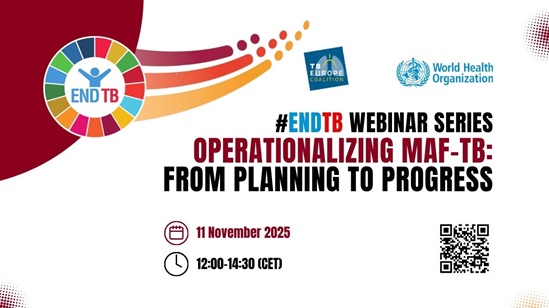Caseworker for foster child who later died had troubling history, documents show – Capitol News Illinois

Report on Systemic Failures in Illinois Child Protective Services: The Case of Mackenzi Felmlee
Introduction: A Failure to Uphold Sustainable Development Goals
The death of 18-year-old foster child Mackenzi Felmlee in May 2024 highlights critical deficiencies within the Illinois child welfare system, representing a severe breach of commitments under the United Nations Sustainable Development Goals (SDGs). This case demonstrates profound failures related to SDG 16 (Peace, Justice and Strong Institutions), SDG 3 (Good Health and Well-being), and SDG 4 (Quality Education). The investigation reveals issues of institutional accountability, caseworker misconduct, and a lack of transparency that directly contradict the principles of protecting vulnerable populations.
Institutional Failures and SDG 16: Peace, Justice and Strong Institutions
The circumstances surrounding Mackenzi Felmlee’s case point to a systemic breakdown in the state’s duty to provide effective, accountable, and transparent institutions, as mandated by SDG 16.
Sub-Target 16.2: Ending Abuse and Violence Against Children
The primary failure in this case is the violation of SDG 16.2, which calls for an end to abuse, exploitation, and all forms of violence against children.
- Mackenzi Felmlee was subjected to extreme cruelty, resulting in her death. Her foster mother, Shemeka Williams, and Williams’ mother, Cornelia Reid, have been indicted on charges including first-degree murder and aggravated domestic battery.
- Evidence recovered by police includes videos and photos documenting severe physical abuse, forced humiliation, and neglect.
- An autopsy revealed extensive bruising, a blood clot attributed to trauma and immobility, and a body weight of only 90 pounds, indicating prolonged suffering.
Sub-Target 16.6: Developing Effective, Accountable, and Transparent Institutions
The actions of the Illinois Department of Children and Family Services (DCFS) and its contractor, Lutheran Child and Family Services, demonstrate a lack of accountability and effective oversight.
- Caseworker Misconduct: Kurtavia White, a caseworker assigned to Mackenzi from June 2022 to May 2023, was found to have falsified records by “copying and pasting notes for home visits,” failing to properly document the child’s condition.
- Negligent Hiring Practices: Prior to and during her employment as a caseworker, Ms. White had a documented history of violent and harassing behavior, including an arrest for a violent crime and 11 requests for orders of protection filed against her by eight different women. Despite this history, she was subsequently hired directly by DCFS as a child welfare specialist.
- Lack of Transparency: DCFS has refused to release a legally mandated report detailing the circumstances of Mackenzi’s death, citing the ongoing criminal trial. This action undermines public accountability and the intent of the 1997 law designed to ensure transparency and drive systemic improvements following the death of a child in state care.
Violations of Health, Education, and Equality Goals
The case also reveals significant failures in meeting other fundamental SDGs, particularly those concerning the well-being and development of children.
SDG 3: Good Health and Well-being
The state failed to ensure Mackenzi’s right to health and well-being.
- Evidence shows a “drastic change” in her physical appearance, from a healthy teenager to an emaciated and unkempt young woman.
- Medical findings indicate that a fatal blood clot could have been treated with medication had she received timely medical attention.
- Police believe her caregivers delayed calling for emergency services for over an hour, instead recording videos of her suffering.
SDG 4: Quality Education
Mackenzi’s access to quality education, a cornerstone of SDG 4, was compromised while in state care.
- She was removed from public school, where she was reportedly an honor student, for “homeschooling” under the pretext of being bullied.
- School records showed frequent truancy before her removal.
- The lack of oversight into her educational environment while in the foster home represents a failure to ensure her continued development and a potential mechanism to isolate her from mandatory reporters.
Conclusion: A Call for Accountability and Reform
The death of Mackenzi Felmlee is not an isolated tragedy but a symptom of deep-rooted institutional failures. The case underscores an urgent need for reform within the Illinois DCFS to align its practices with the global commitments of the Sustainable Development Goals. Achieving SDG 16 requires robust, transparent, and accountable child protection systems. This includes stringent background checks, rigorous supervision of caseworkers, adherence to transparency laws, and prioritizing the health, safety, and education of every child in state custody. Without such reforms, the state’s most vulnerable children remain at risk.
Which SDGs are addressed or connected to the issues highlighted in the article?
The following Sustainable Development Goals are relevant to the article:
- SDG 16: Peace, Justice and Strong Institutions: This is the most central SDG in the article. It is addressed through the lens of institutional failure, violence against children, and a lack of accountability. The Illinois Department of Children and Family Services (DCFS) is portrayed as an institution failing in its duty to protect a vulnerable child, lacking transparency by withholding reports, and demonstrating poor governance by hiring a caseworker with a violent past. The entire narrative revolves around the failure of justice for the victim, Mackenzi Felmlee.
- SDG 3: Good Health and Well-being: The article details the severe decline in Mackenzi’s physical and mental health. She suffered from extreme weight loss, malnutrition, and physical injuries that led to a fatal blood clot. Her death was preventable with proper medical care. The psychological torment she endured also speaks to a complete disregard for her mental well-being, connecting directly to this goal.
- SDG 5: Gender Equality: This goal is relevant due to the extensive history of violence against women perpetrated by the caseworker, Kurtavia White. The article notes that “orders of protection filed against her by eight women for allegedly harassing, abusing and threatening violence against them.” This highlights a pattern of violence against women that went unaddressed and is a key element of the institutional failure described.
- SDG 4: Quality Education: The article touches upon the disruption of Mackenzi’s education. It mentions she was “frequently truant, missing 25% of school days” before being homeschooled. The failure of the child welfare system to ensure she received a consistent and quality education while in state care connects to the principles of this SDG.
What specific targets under those SDGs can be identified based on the article’s content?
-
Target 16.2: End abuse, exploitation, trafficking and all forms of violence against and torture of children.
The article is a case study of the failure to meet this target. Mackenzi Felmlee was subjected to extreme physical and psychological violence, including being “beaten with a belt,” forced to wear “soiled underwear on her face,” and mocked while injured. This abuse and neglect ultimately led to her death, representing the most severe form of violence against a child.
-
Target 16.6: Develop effective, accountable and transparent institutions at all levels.
The actions of the Illinois Department of Children and Family Services (DCFS) directly contradict this target. The agency is criticized for a lack of transparency for refusing to release a legally required report on Mackenzi’s death. It demonstrated a lack of accountability by hiring a caseworker with a documented history of violence and by failing to properly oversee Mackenzi’s care, despite policies requiring multiple monthly visits.
-
Target 3.2: End preventable deaths of newborns and children.
Although Mackenzi was 18, she was in specialized foster care and her death was preventable. The forensic pathologist found a “2-centimeter blood clot in her lungs, likely… caused by trauma and worsened by poor nutrition and immobility.” A doctor consulted by police confirmed the clot “could have been treated with medication — if Mackenzi had received medical attention sooner.” This highlights a preventable death under the state’s care.
-
Target 3.4: Reduce premature mortality from non-communicable diseases through prevention and treatment and promote mental health and well-being.
Mackenzi’s death from a blood clot (a non-communicable circulatory condition) resulting from untreated trauma and neglect fits this target. Furthermore, the severe psychological abuse, which led to a “drastic change” in her appearance from a “happy, healthy 15-year-old” to an “emaciated and fearful young woman,” demonstrates a complete failure to promote her mental health and well-being.
-
Target 5.2: Eliminate all forms of violence against all women and girls.
The caseworker, Kurtavia White, was the subject of “orders of protection filed against her by eight women” for threats, harassment, and abuse. This documented pattern of violence against multiple women is a clear example of the issues this target aims to eliminate.
Are there any indicators mentioned or implied in the article that can be used to measure progress towards the identified targets?
- Incidence of child death due to abuse and neglect in state care: The death of Mackenzi Felmlee is the ultimate negative indicator for Target 16.2. The article also mentions a quarterly report from DCFS that listed “more than 200 children” who were seriously injured or died, providing a quantitative, albeit tragic, measure of the system’s failures.
- Proportion of legally required reports released by public institutions: An implied indicator for Target 16.6 is the transparency of government agencies. The article explicitly states that DCFS “refused to release a timeline” and a legally required report on Mackenzi’s death, indicating a failure in transparency and accountability.
- Vetting and background check procedures for public employees in sensitive roles: An indicator for institutional effectiveness (Target 16.6) is the quality of its hiring practices. The fact that DCFS hired Kurtavia White as a child welfare specialist despite her history of a violent crime arrest and “11 requests for orders of protection by eight women” points to a significant failure in this area.
- Malnutrition and health status of children in foster care: An indicator for Target 3.4 is the physical health of children under state protection. The article provides specific data points for Mackenzi, noting she “weighed just 90 pounds” at her death and photos showed “significant weight loss and lack of hygiene.”
- School truancy rates for children in foster care: An implied indicator for Target 4.1 is educational attainment. The article notes that school records showed Mackenzi “was frequently truant, missing 25% of school days” before she was removed from traditional school, suggesting a failure to ensure her access to quality education.
SDGs, Targets, and Indicators Analysis
| SDGs | Targets | Indicators (Mentioned or Implied in the Article) |
|---|---|---|
| SDG 16: Peace, Justice and Strong Institutions | 16.2: End abuse, exploitation, trafficking and all forms of violence against and torture of children. | – Number of child deaths and serious injuries in state care (Mackenzi’s death; quarterly report with over 200 children). – Documented evidence of physical and psychological violence (videos of beatings, mocking, abuse). |
| SDG 16: Peace, Justice and Strong Institutions | 16.6: Develop effective, accountable and transparent institutions at all levels. | – Number of legally required reports withheld by public agencies (DCFS refusing to release the report on Mackenzi’s death). – Adequacy of background checks for child welfare employees (Hiring of a caseworker with a violent past). – Falsification of official records (Caseworker “copying and pasting notes for home visits”). |
| SDG 3: Good Health and Well-being | 3.2: End preventable deaths of newborns and children. | – Incidence of preventable deaths in state care (Mackenzi’s death from a treatable blood clot). |
| SDG 3: Good Health and Well-being | 3.4: Reduce premature mortality… and promote mental health and well-being. | – Evidence of malnutrition in foster children (Mackenzi weighed 90 pounds; “emaciated” appearance). – Lack of treatment for non-communicable diseases (Untreated fatal blood clot). |
| SDG 5: Gender Equality | 5.2: Eliminate all forms of violence against all women and girls. | – Number of protection orders filed against an individual for violence/harassment (Caseworker had 11 requests from 8 women). |
| SDG 4: Quality Education | 4.1: Ensure that all girls and boys complete free, equitable and quality primary and secondary education. | – School truancy rates for children in foster care (Mackenzi missed 25% of school days). |
Source: capitolnewsillinois.com

What is Your Reaction?
 Like
0
Like
0
 Dislike
0
Dislike
0
 Love
0
Love
0
 Funny
0
Funny
0
 Angry
0
Angry
0
 Sad
0
Sad
0
 Wow
0
Wow
0



























;Resize=805#)


















































